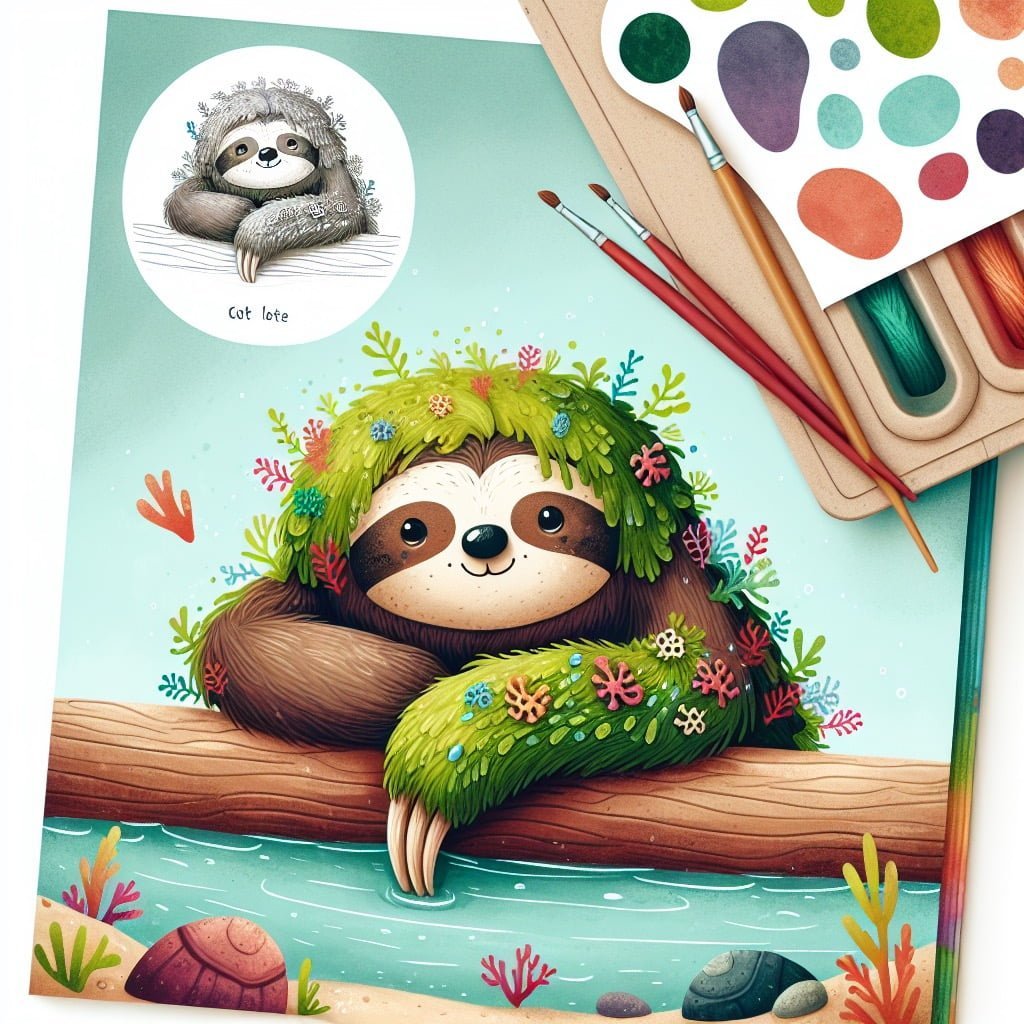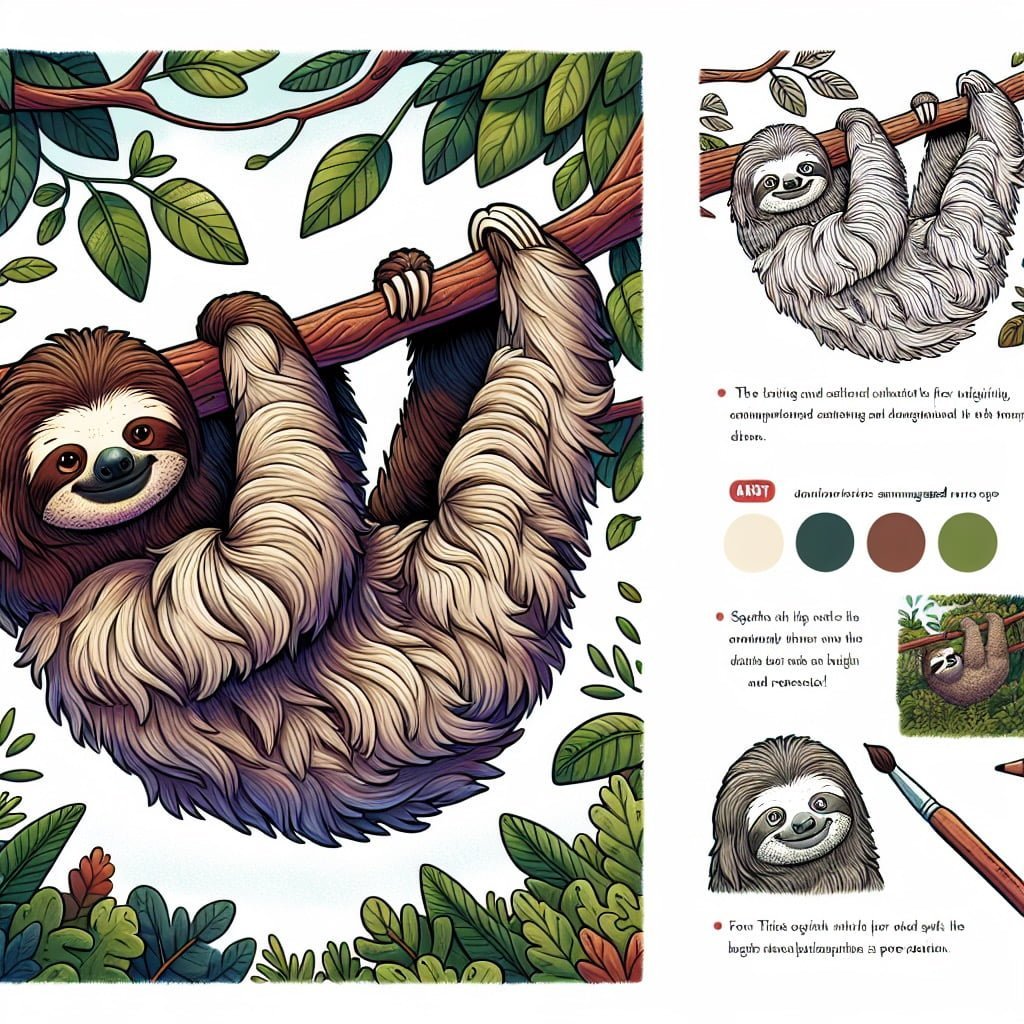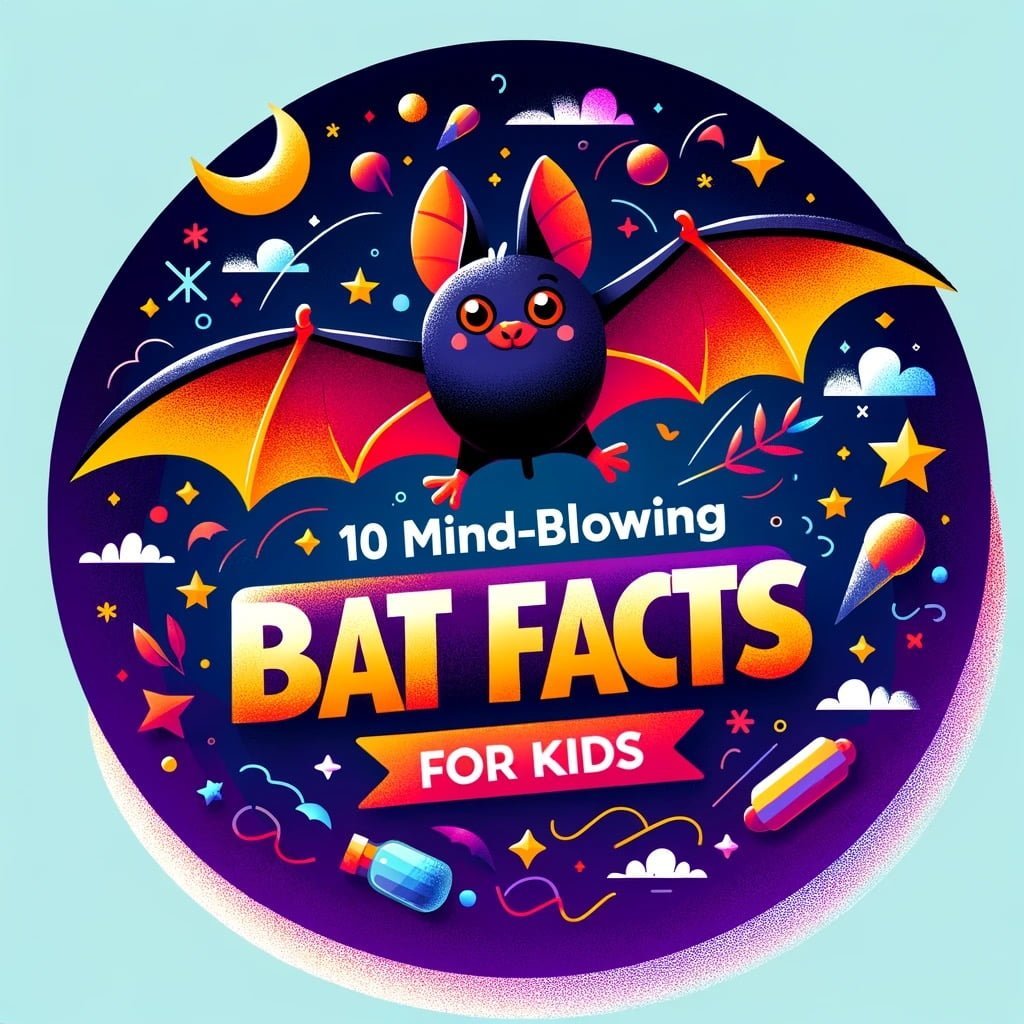Welcome to our latest post all about fascinating Sloth Facts For Kids! You and your little ones are in for a treat as we dive into the incredible world of these slow-moving but amazing creatures. From their surprising swimming skills to their unique bathroom habits, there’s so much to learn about sloths. Did you know that sloths can turn their heads 270 degrees or that they can sleep up to 20 hours a day? And how about the fact that sloths can actually turn green from their algae-rich diet? Get ready to explore these fun facts and more, perfect for both younger and older kids alike. Let’s embark on this wild adventure together and discover the wonder of sloths!
Sloth Facts For Kids
1. Sloths Are Surprisingly Good Swimmers

For younger kids: Sloths can swim really well in the water!
For older kids: Despite their slow movement on land, sloths are excellent swimmers, using their long arms to paddle through the water with ease.
Detailed explanation:Sloths may be known for their slow and leisurely demeanor on land, but they are actually surprisingly good swimmers. While they may not move quickly, sloths are well-adapted to life in the water thanks to their long arms and strong claws. These physical attributes allow sloths to move effortlessly through the water, using a breaststroke-like motion to propel themselves forward.
One of the reasons sloths are such good swimmers is because they spend a significant amount of time in trees, where they are well-suited to life in the canopy. Sloths are able to drop from tree branches into bodies of water below, using their swimming skills to navigate through rivers and ponds in search of food or to escape predators.
Another interesting aspect of sloths’ swimming ability is their ability to hold their breath for an impressive amount of time. Sloths can stay submerged underwater for up to 40 minutes at a time, thanks to their slow metabolism and efficient use of oxygen. This allows them to move stealthily through the water, using their natural camouflage to blend in with their surroundings.
Overall, sloths may not be the fastest or most agile swimmers, but they are definitely adept at navigating through water when they need to. Their unique adaptations and abilities make them fascinating creatures to study, especially when considering their surprising prowess in the water. So next time you see a sloth hanging out in a tree, remember that they are not just land-dwellers – they are also skilled swimmers.
Sloth Facts For Kids
2. Sloths Only Poop Once a Week

For younger kids: Sloths only go potty once a week!
For older kids: Sloths have adapted to conserve energy by only defecating once a week, often descending from trees to do so, making them vulnerable to predators during this time.
Detailed explanation:Sloths are fascinating creatures that have many unique characteristics, one of which is their infrequent bathroom habits. It may come as a surprise, but sloths only poop once a week. This may sound unusual, but it actually serves a purpose in their slow-paced lives.
One reason sloths only poop once a week is due to their slow metabolism. Because sloths have a very slow digestive system, it can take them up to a week to fully digest their food. This means that they don’t need to go to the bathroom as frequently as other animals do.
Another reason for their infrequent bathroom trips is their energy conservation. Sloths have a very low energy diet of leaves, which are hard to digest. By holding onto their waste until they absolutely need to expel it, sloths are conserving energy that would otherwise be wasted on frequent trips to the bathroom.
Despite their seemingly strange bathroom habits, sloths have adapted to their environment in a way that allows them to survive and thrive. This unique behavior not only sets them apart from other animals, but also plays a crucial role in their overall well-being.
In conclusion, sloths only pooping once a week is just one of the many interesting facts about these fascinating creatures. By understanding the reasons behind this behavior, we can gain a better appreciation for the incredible adaptations that sloths have made to survive in their environment.
Sloth Facts For Kids
3. Sloths Can Turn Their Heads 270 Degrees

For younger kids: Sloths can look almost all the way behind them!
For older kids: Sloths possess a unique ability to turn their heads up to 270 degrees, allowing them to keep an eye out for predators while hanging upside down.
Detailed explanation:Sloths are fascinating creatures known for their slow-moving nature and unique behaviors. One interesting fact about sloths, especially for kids who are learning about these animals, is that they can turn their heads an impressive 270 degrees. This means that sloths have the ability to rotate their heads almost all the way around, giving them a wide range of vision without having to move their bodies.
This incredible ability is made possible by the sloth’s unique skeletal structure. Sloths have extra vertebrae in their necks compared to other mammals, which allows them to have this extended range of motion. This adaptation is thought to have evolved as a way for sloths to better navigate their tree-dwelling habitats, where they spend the majority of their time hanging upside down.
For kids who are curious about why sloths have this ability, it can be explained that being able to turn their heads so far around helps sloths to scan their surroundings for predators or potential food sources without having to put themselves at risk by moving around too much. This is especially important for sloths, as their slow movement speed and reliance on camouflage make them vulnerable to predators in the wild.
Overall, the fact that sloths can turn their heads 270 degrees is just one example of the many fascinating adaptations that these creatures have developed to survive in their unique environment. It is a fun and engaging fact for kids to learn about sloths and gain a greater appreciation for the amazing diversity of the animal kingdom.
Sloth Facts For Kids
4. Sloths Move So Slowly That Algae Grows on Them

For younger kids: Sloths can have their own garden on their fur!
For older kids: Due to their leisurely pace, sloths’ fur provides the perfect environment for algae to grow, providing camouflage and additional nutrients to their diet.
Detailed explanation:Sloths are fascinating creatures known for their incredibly slow movements, which has earned them the reputation of being some of the slowest mammals on Earth. One interesting fact about sloths is that they move so slowly that algae actually grows on their fur. This phenomenon occurs because sloths spend the majority of their time hanging upside down from trees in the rainforest, where the moist environment provides the perfect conditions for algae to thrive.
Algae growth on sloths serves as a form of camouflage, helping them blend in with the green hues of the canopy and providing them with some level of protection from predators. While the algae itself does not harm the sloths, it can actually benefit them by providing additional nutrients and insulation.
The slow movement of sloths is primarily attributed to their incredibly low metabolic rate, which helps them conserve energy. This slow pace also aids in avoiding detection by predators, as their motion is often mistaken for just another part of the tree they are clinging to. In addition to their slow movements, sloths are also known for their unique anatomy, including long claws that they use for hanging onto branches and sleeping for up to 20 hours a day.
In conclusion, the fact that algae grows on sloths due to their slow movement is just one of the many fascinating aspects of these mesmerizing creatures. Sloths truly are a captivating species that continue to intrigue researchers and nature enthusiasts alike.
Sloth Facts For Kids
5. Sloths Have a Four-chambered Stomach Like Cows

For younger kids: Sloths have a special tummy with four rooms!
For older kids: Sloths possess a four-chambered stomach similar to cows, which helps them digest their tough, fibrous diet of leaves and plants more efficiently.
Detailed explanation:Sloths, despite their slow and leisurely nature, are fascinating creatures with many unique characteristics. One interesting fact about sloths is that they have a four-chambered stomach, similar to that of cows. This specialized stomach allows sloths to efficiently digest the tough and fibrous leaves that make up the majority of their diet.
The four-chambered stomach of a sloth functions in a similar way to that of a cow. The first chamber, called the rumen, is where the food is initially broken down with the help of bacteria and other microbes. The partially digested food then moves on to the other chambers, where further digestion takes place. This complex digestive system enables sloths to extract as many nutrients as possible from the leaves they consume, which are not particularly high in nutritional value.
Having a four-chambered stomach is crucial for sloths, as their slow metabolism means that they have limited energy to spare. By efficiently breaking down and absorbing nutrients from the leaves they eat, sloths are able to conserve energy and survive on their low-calorie diet. This adaptation has allowed sloths to thrive in their natural habitats, where food sources may be scarce and competition for resources is high.
In conclusion, the fact that sloths have a four-chambered stomach like cows is a testament to the remarkable adaptations that these unique animals have evolved to survive in their environment. This specialized digestive system plays a crucial role in allowing sloths to efficiently process their food and extract the nutrients they need to thrive.
Sloth Facts For Kids
6. Sloths Sleep Up to 20 Hours a Day

For younger kids: Sloths love to nap for most of the day!
For older kids: Sloths are known for their long sleeping hours, with some species snoozing up to 20 hours a day to conserve energy and process their low-nutrient plant diet.
Detailed explanation:Sloths are well-known for their incredibly slow pace of life and one of the most fascinating aspects of their behavior is their sleeping habits. It is a commonly known fact that sloths sleep up to 20 hours a day, making them one of the sleepiest animals on Earth. This excessive amount of sleep is mainly due to their slow metabolism and low-energy diet, which consists mainly of leaves and twigs that are difficult to digest.
Sloths are arboreal creatures, spending the majority of their time hanging upside down in trees. This unusual lifestyle requires very little physical exertion, which contributes to their need for such long periods of sleep. In fact, sloths are so well adapted to their environment that they can even sleep while hanging from a branch, using their curved claws to securely grip the tree.
Despite sleeping for such long periods of time, sloths do not have a typical sleep cycle like most mammals. Instead, they have a very irregular sleeping pattern, often taking short naps throughout the day and night. This behavior is believed to be an adaptation to their environment, allowing them to conserve energy and avoid predators who may be more active during certain times of the day.
In conclusion, the fact that sloths sleep up to 20 hours a day is a key aspect of their unique behavior and lifestyle. This excessive amount of sleep is essential for their survival in the wild, allowing them to conserve energy and stay safe from potential threats. Sloths truly are fascinating creatures, and their incredible sleeping habits are just one of the many reasons why they capture the curiosity of both children and adults alike.
Sloth Facts For Kids
7. The Slowest Sloth is the Pygmy Three-toed Sloth

For younger kids: The pygmy sloth is one of the slowest sloths around!
For older kids: The Pygmy Three-toed Sloth, found only on a small island, is the slowest sloth species, moving at an incredibly slow pace even compared to other sloths.
Detailed explanation:Sloths are well-known for their leisurely pace and laid-back demeanor, with the Pygmy Three-toed Sloth holding the title of the slowest among them. These unique creatures are native to the small island of Isla Escudo de Veraguas off the coast of Panama, where they face numerous threats to their survival.
One of the fascinating Sloth Facts For Kids to note is that the Pygmy Three-toed Sloth’s slow movement is not just limited to their speed on land. Even their digestion process is incredibly sluggish, taking up to a month to fully digest their food. This slow metabolism is actually a key survival strategy for sloths, allowing them to conserve energy and thrive on a diet of low-nutrient leaves.
Despite their slow nature, Pygmy Three-toed Sloths are skilled climbers and spend the majority of their time high up in the trees, where they are safer from predators such as jaguars and eagles. Their long claws and strong limbs help them navigate the dense forest canopy with ease, moving at a deliberate pace as they search for their next meal of leaves, buds, and fruit.
However, the slow and steady lifestyle of the Pygmy Three-toed Sloth also makes them particularly vulnerable to habitat loss and human activities such as deforestation and illegal hunting. Conservation efforts are crucial to protecting these unique creatures and ensuring their continued survival in the wild. By raising awareness about Sloth Facts For Kids like the Pygmy Three-toed Sloth’s slow nature and the importance of preserving their habitat, we can help ensure a brighter future for these fascinating animals.
Sloth Facts For Kids
8. Sloths Can Live Up to 30 Years in the Wild

For younger kids: Sloths can live a really long time outside!
For older kids: In their natural habitat, sloths have been recorded to live up to 30 years, adapting to a slow pace of life that helps them survive in the wild.
Detailed explanation:Sloths are fascinating mammals known for their slow-moving nature and laid-back lifestyle. One interesting fact about sloths that may surprise many is that they can live up to 30 years in the wild. This is quite impressive considering their unique metabolism and behavior, which sets them apart from other animals.
Sloths are herbivores that primarily feed on leaves, twigs, and buds, which provide them with the necessary nutrients to survive in their natural habitat. Their slow metabolism allows them to conserve energy and minimize their movements, helping them to survive on their low-energy diet for decades.
One reason why sloths can live up to 30 years in the wild is their evolved adaptations to their environment. Their slow movement not only conserves energy but also helps them evade predators such as jaguars and eagles. Additionally, their long claws and strong grip allow them to hang effortlessly from tree branches for extended periods, further enhancing their survival in the wild.
Despite their sluggish nature, sloths are well adapted to their surroundings and can thrive in the dense rainforests of Central and South America. Their longevity in the wild is a testimony to their resilience and ability to survive in challenging environments.
In conclusion, sloths can live up to 30 years in the wild due to their unique physiology, behavior, and evolutionary adaptations. Their slow-paced lifestyle may seem unusual to us, but it is well-suited for their survival in the wild. So next time you see a sloth hanging lazily from a tree, remember that it is perfectly adapted to its environment and can live a long and fulfilling life in the wild.
Sloth Facts For Kids
9. Sloths Have Camouflaged Fur for Protection

For younger kids: Sloths have special fur that helps them hide in trees!
For older kids: The unique greenish tinge to a sloth’s fur is due to algae, providing them with camouflage against the tree canopy and protecting them from predators.
Detailed explanation:Sloths, known for their slow and deliberate movements, have a very interesting adaptation that helps them blend into their surroundings – camouflaged fur. This camouflaged fur serves as a form of protection for sloths in the wild, helping them to avoid predators such as eagles and jaguars. Sloths, being slow-moving creatures, rely heavily on camouflage to stay hidden from their predators and protect themselves.
The unique coloration and pattern of a sloth’s fur closely resemble the leaves and branches of the trees they inhabit, making it difficult for predators to spot them. This adaptation is crucial for their survival, as it allows sloths to remain undetected while they move slowly through the treetops in search of food.
Additionally, the algae that often grows on a sloth’s fur helps to enhance their camouflaged appearance. This algae not only provides extra insulation and moisture for the sloth but also adds a greenish tint to their fur, further helping them blend in with their leafy surroundings.
Overall, the camouflaged fur of sloths is a fascinating adaptation that showcases the incredible ways in which animals have evolved to survive in their environments. By staying hidden from predators, sloths are able to protect themselves and continue their slow-paced existence high up in the trees.
Sloth Facts For Kids
10. Sloths Can Turn Green Due to Their Algae-rich Diet

For younger kids: Sloths can sometimes turn green like a leaf!
For older kids: With their diet of algae and flora, sloths can take on a greenish hue, blending in seamlessly with the surrounding foliage and further enhancing their camouflage in the treetops.
Detailed explanation:Sloths are fascinating creatures known for their slow-moving nature and unique adaptations. One interesting fact about sloths is that they can actually turn green due to their algae-rich diet. Sloths primarily eat leaves, which are not very nutritious and can be difficult to digest. To supplement their diet, sloths also consume algae that grow on their fur. This algae provides additional nutrients for the sloths and can even help camouflage them in their forest environment.
The algae that sloths ingest is a type of green algae called Trichophilus, which thrives in the warm, humid climate of the sloth’s habitat. As the algae grows on the sloth’s fur, it can give their hair a greenish tinge, especially during the wet season when the algae is more abundant. This phenomenon not only provides the sloths with extra nutrients, but it also serves as a form of symbiosis between the sloths and the algae. The algae benefits from the sloth’s body heat and protection, while the sloths benefit from the additional nutrients provided by the algae.
It is important to note that while sloths can turn green due to their algae-rich diet, this color change is not permanent. Sloths will often groom themselves to remove excess algae, as too much can weigh down their fur and make it difficult for them to move. Overall, the ability of sloths to turn green highlights the fascinating ways in which animals have evolved to adapt to their environments and obtain necessary nutrients. So, the next time you see a green sloth, remember that it’s not just their slow-moving nature that sets them apart, but also their unique diet and symbiotic relationship with algae.
Did you know?
Did you know that sloths are such expert nappers that they even sleep hanging upside down!
Summary of Sloth Facts For Kids
If you’re looking for fascinating facts to share with kids about an adorable and unique creature, sloths are the perfect subject. From their surprising swimming skills to their once-a-week bathroom habits, sloths are full of interesting quirks that will captivate young minds. Did you know that sloths can turn their heads up to 270 degrees, or that they only sleep up to 20 hours a day? These fun facts about sloths will not only entertain kids but also educate them about the incredible adaptations of these slow-moving animals. So, if you want to learn more about these charming creatures and impress your friends with some cool sloth trivia, dive into this blog post full of engaging sloth facts for kids.
Sources and additional information for Sloth Facts For Kids
WikipediaBritannicaSan Diego Zoo KidsThe Smithsonian InstitutionDK Find Out!Australian MuseumWorld Wildlife FundThe Nature ConservancyAnimal PlanetMonterey Bay AquariumPBS NatureSmithsonian’s National Zoo & Conservation Biology InstituteWorld Wildlife FundAnimal Diversity Web (University of Michigan)IUCN Red List of Threatened SpeciesThe Cornell Lab of Ornithology – All About BirdsNational Audubon SocietyEncyclopedia of LifeSeaWorld Parks & EntertainmentAustralian Museum – AnimalsEncyclopedia of Life




